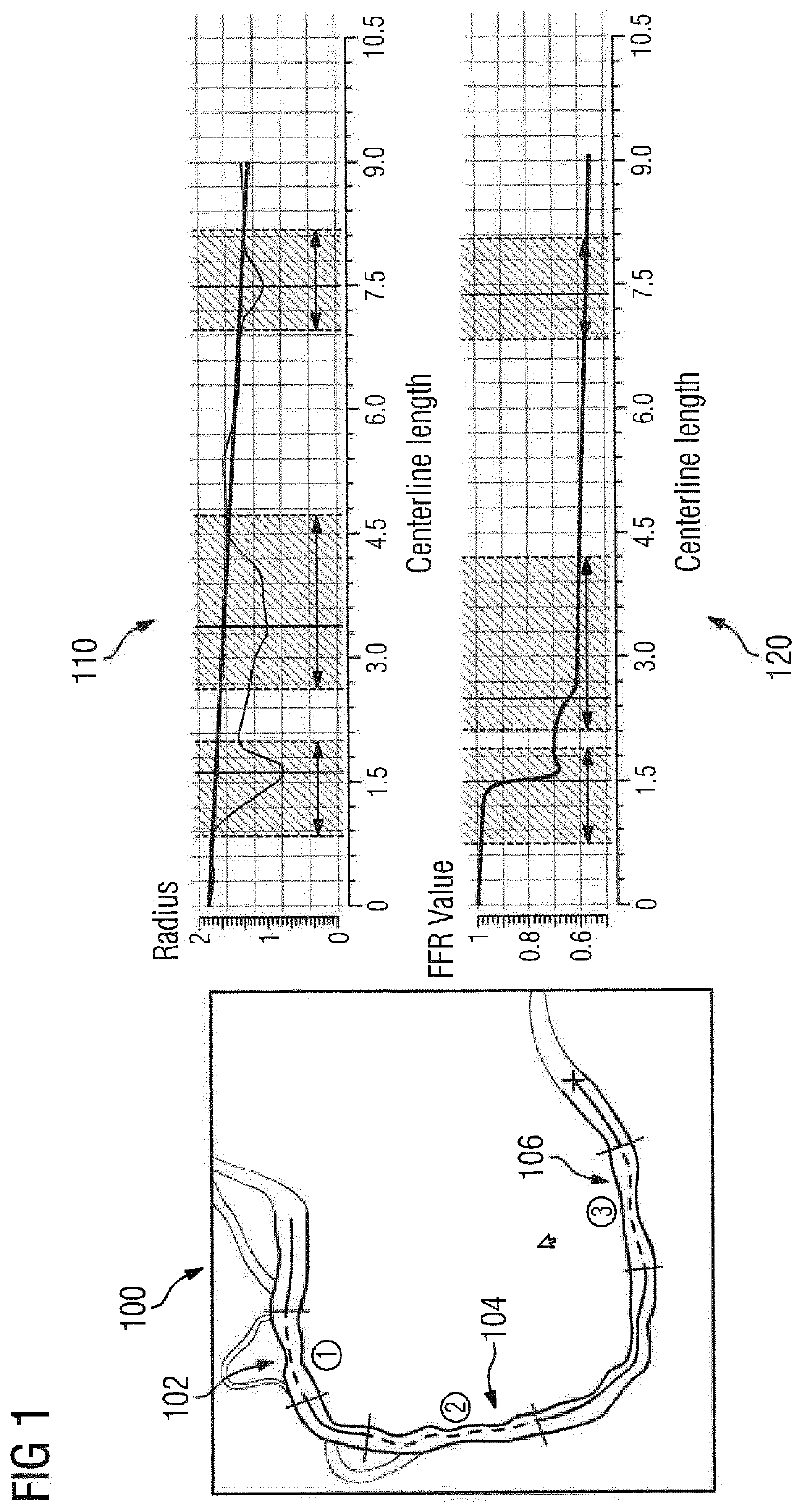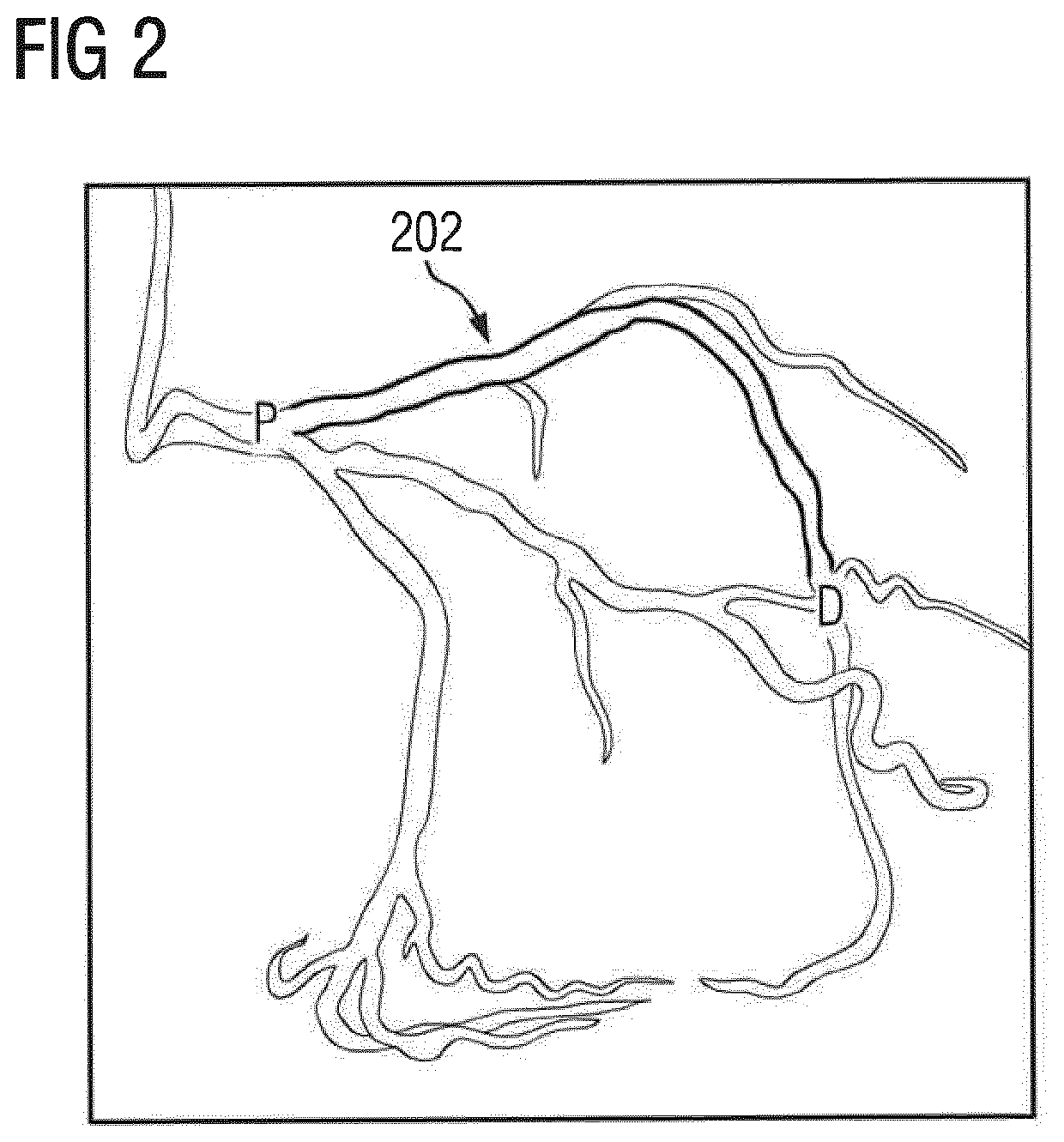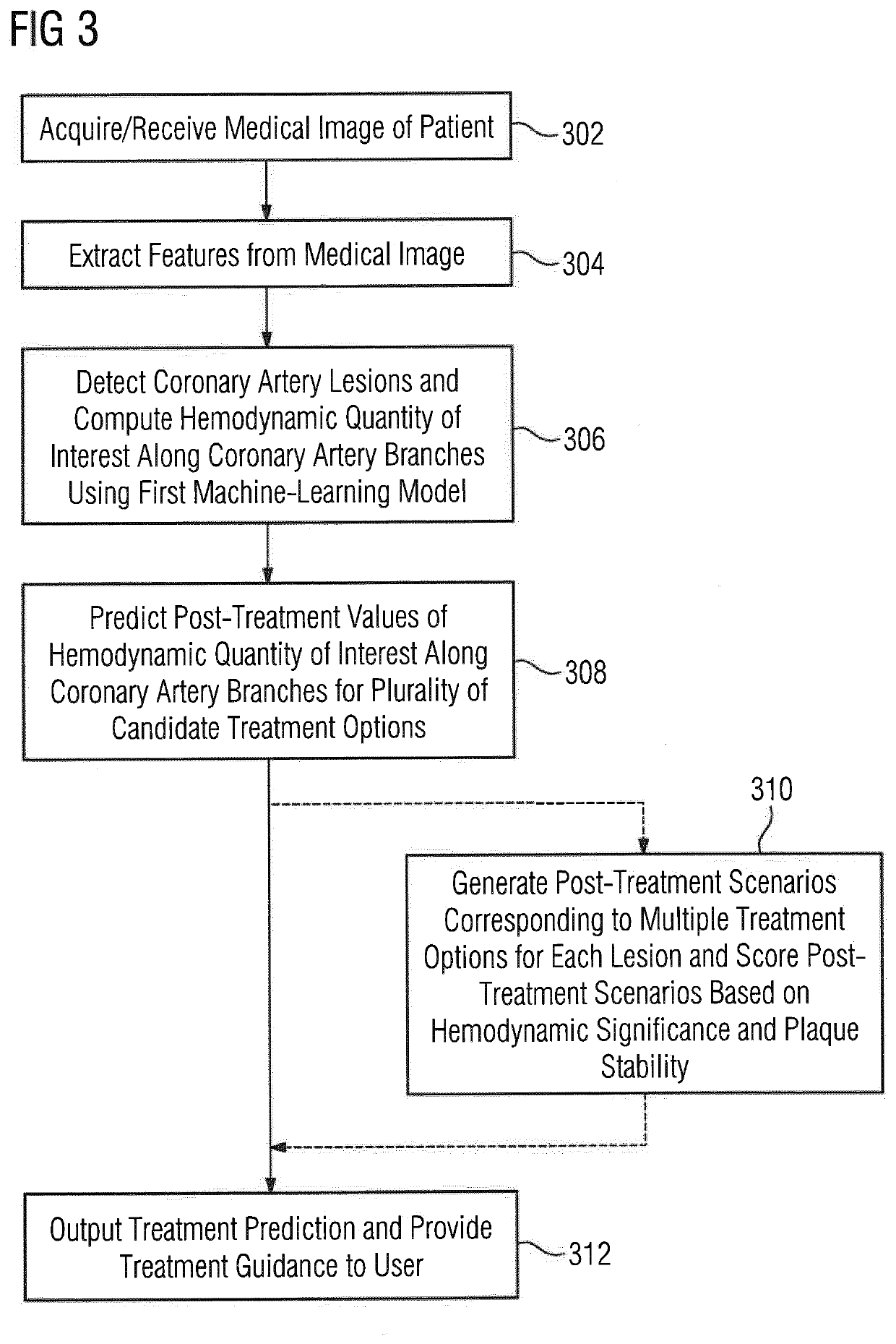Non-invasive assessment and therapy guidance for coronary artery disease in diffuse and tandem lesions
a technology non-invasive assessment, which is applied in the direction of instruments, applications, image enhancement, etc., can solve the problems of adverse clinical outcomes, long stent length association, and difficult optimal treatment of diffuse and tandem lesions, and achieve the effect of improving the accuracy of non-invasive estimation
- Summary
- Abstract
- Description
- Claims
- Application Information
AI Technical Summary
Benefits of technology
Problems solved by technology
Method used
Image
Examples
first embodiment
[0054]In a first embodiment, the virtual pullback curve is computed using cascaded trained vFFR regression models. Blood flow conditions are significantly altered in stenosis regions (lesions) due to a number of reasons, including sharp radius variations, irregular / non-circular cross-sectional lumen shape, formations of jets after narrow stenoses, etc. Accordingly, computation of vFFR is very sensitive to the geometry features in the stenosis region and it is important that the accuracy of a machine-learning regression model be specifically controlled in the stenosis region. With the goal of improving accuracy of a vFFR regression model in the stenosis region, a trained vFFR regression model, such as the regression model trained using the method described in U.S. Pat. No. 9,349,178, can be augmented with additional machine-learning trained vFFR model applied in a cascaded fashion. In particular, once a first vFFR regressor predicts the total pressure drop along the stenosis, this va...
second embodiment
[0062]In a second embodiment, the virtual FFR pullback curve is computed using a recurrent neural network (RNN). In this embodiment, virtual FFR (or iFR) is computed by a regression model trained with an RNN, such as a long short-term memory (LSTM) network. In this case, an analogy between a sequence of cross-sections along a centerline and a sequence of input events on a temporal line is leveraged. RNNs are designed to process a sequence of input events and they are capable of storing an internal state. The internal state is updated based on the input and determines the output, thereby allowing the network to modulate its behavior based on input events from the past. LSTM networks are a particular class of deep learning RNNs that combine the ability to recognize local features (“short-term” memory) with the context (“long-term” memory) in which they appear. In this embodiment, the RNN processes an ordered sequence of vascular cross-sections one-by-one (from the beginning to the end...
third embodiment
[0070]In a third embodiment, the virtual FFR pullback curve is computed using a convolutional neural network (CNN). In this embodiment, a CNN can be employed to predict pressure variation or vFFR along a centerline of a coronary anatomical model of the patient. The CNN can directly predict vFFR along the centerline or predict pressure values along the centerline, in which case the vFFR values are directly computed from the predicted pressure values. In this embodiment, the CNN can automatically detect the lesions (stenosis regions) in the coronary artery tree as well as computing the pressure / vFFR along the coronary artery tree. In an advantageous implementation, a fixed number N of equally spaced locations are considered for each vessel or vessel branch. At each location, a number of features describing the local geometry of the vessel are considered. For example, at each location, geometric features such as the radius, curvature, eccentricity, stenosis degree, etc., can be input t...
PUM
 Login to View More
Login to View More Abstract
Description
Claims
Application Information
 Login to View More
Login to View More - R&D
- Intellectual Property
- Life Sciences
- Materials
- Tech Scout
- Unparalleled Data Quality
- Higher Quality Content
- 60% Fewer Hallucinations
Browse by: Latest US Patents, China's latest patents, Technical Efficacy Thesaurus, Application Domain, Technology Topic, Popular Technical Reports.
© 2025 PatSnap. All rights reserved.Legal|Privacy policy|Modern Slavery Act Transparency Statement|Sitemap|About US| Contact US: help@patsnap.com



